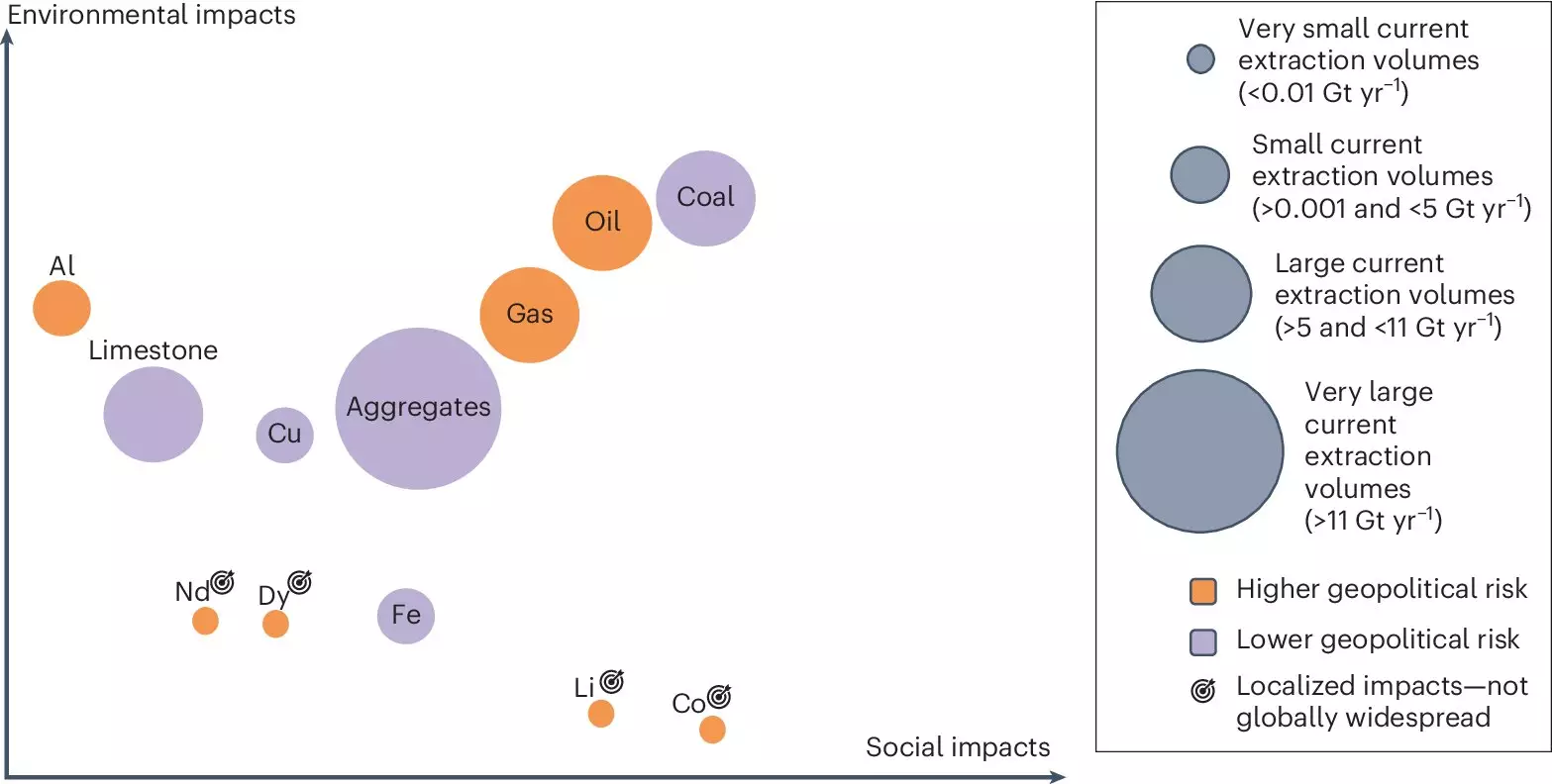The global demand for cobalt and lithium for e-car batteries is expected to increase almost 20-fold by 2050, according to a recent study published in Nature Climate Change. Additionally, the development of a fossil-free power supply will require a significant amount of copper, aluminum, and iron, with the respective demand likely to double. Rare earth elements, essential for wind turbines, will also be needed more than ever before. This increase in material consumption is directly linked to the climate transition towards decarbonization. While decarbonization will make the global economy less resource-intensive by phasing out coal, oil, and gas, the additional material requirements pose considerable ecological and social risks at regional and local levels.
The study emphasizes the importance of implementing demand-side climate solutions to mitigate the increased material consumption associated with the climate transition. These solutions include behavioral changes in mobility, housing, and nutrition, as well as improving material circularity in the economy. Demand-side climate protection has gained attention for its potential to reduce greenhouse gas emissions rapidly and improve overall quality of life. The study highlights the need for investments in infrastructure that enable people to adopt climate-friendly behaviors and positive incentives to promote these changes.
A detailed risk profile for each raw material was developed as part of the study, highlighting the environmental and social risks associated with extraction. This includes land consumption, threats to biodiversity, water requirements, health hazards from toxic substances, poor working conditions, corruption, political instability, and geopolitical dependencies. For example, Guinea accounts for nearly a quarter of global bauxite production, while Congo holds half of the world’s cobalt deposits. Addressing these risks requires a holistic approach that considers the entire supply chain of raw materials.
By implementing demand-side climate protection measures, the study suggests that decarbonization can become more material-friendly. In the transport sector, this includes promoting more pooled mobility to reduce individual consumption. The building sector can benefit from using natural construction materials, modernizing old buildings, and intensifying the use of living space. Similarly, reducing meat consumption in the food sector not only improves health but also lowers material demand in animal feed production. These changes are aimed at encouraging climate-friendly behaviors through positive incentives and infrastructure investments.
Urgent Need for Further Research
The study calls for urgent interdisciplinary research to quantify and categorize the potential savings in materials through demand-side climate protection. Integrated Assessment Models that form the basis for government decision-making on climate policy need to be updated to include the material dimension of a low-carbon and ultimately carbon-free global economy. This shift towards a more sustainable and material-efficient economy requires innovative solutions and collaborative efforts from policymakers, researchers, and industries.


Leave a Reply